Litter box training might seem like one of those “it just happens” parts of cat ownership. But truthfully, it’s one of the most important steps in creating a happy, healthy environment for your feline friend. When it’s done right, litter box training builds trust, keeps your home clean, and helps your cat feel safe and secure.
Whether you’re bringing home a curious kitten or helping an older rescue adjust to indoor life, the way you introduce and maintain the litter box can make all the difference. Below, we’re sharing practical, proven litter box training tips for cats that every cat parent should know—especially if you want fewer messes and more purrs.
Before we dive in, grab your FREE one-page cheat sheet to follow along with each strategy and keep for easy reference later. Just fill out the form below and let’s get started!
Get the FREE Quick Reference Cheat Sheet!
Litter training your cat just got easier. This handy cheat sheet puts the step-by-step process at your fingertips.
Drop your best email below to get it instantly and join our list for more tips to upgrade your litter care game.
Awesome!
We’ll have your cheat sheet sent right away! Look forward to connecting!
Why Litter Box Training Matters
Most cats instinctively know how to use a litter box. They’re naturally inclined to bury their waste. But the setup you create, and the way you guide your cat, can determine whether they actually follow through or start finding other corners of your home to do their business.
Successful litter training is about more than instinct. It’s about:
- communication
- consistency
- understanding your cat’s needs
So here are my best suggestions for you if your cat is having trouble navigating between your wants and its needs.
1. Choosing the Right Litter Box and Location
Top Litter Box Training Tip Is To Pick a Private Spot

Cats are sensitive, privacy-loving creatures. Placing the litter box in a quiet, low-traffic area can help them feel comfortable using it.
Avoid high-traffic areas, spots near loud appliances, or placing the box next to their food and water.
If you’re just introducing a cat to your home, it’s helpful to set up their litter box in a smaller enclosed space at first—like a guest room or bathroom—so they can adjust to their new surroundings without feeling overwhelmed.
Size and Accessibility Matter
A good rule of thumb is: the litter box should be at least 1.5 times the length of your cat from nose to tail. For kittens or senior cats, make sure the sides are low enough to climb over without difficulty. Covered litter boxes can work, but some cats find them too confining or dislike the trapped smell. Try both types if you’re not sure.
Test Litter Types Early
Not all cat litter is created equal—and not all cats have the same preferences. Clumping litter is typically the most convenient for scooping, but some cats prefer the feel of non-clumping, crystal, or even natural options like pine or paper pellets. Try a few types if needed and pay attention to how your cat reacts.
If you need some tips on choosing the right cat litter, click on the button below to learn more!
2. Introducing the Litter Box
Start Right Away
If you’ve just brought your cat home, introduce the litter box immediately. Gently place them in the box and let them sniff and explore without pressure. They may not use it right away, and that’s okay—familiarity is the first step.
Use Natural Timing
Cats often need to go after eating, drinking, napping, or playing. Gently place your cat in the litter box after these moments—especially if they’re a kitten or still getting used to the routine.
If you see them sniffing, circling, or scratching at the floor, it might be go-time. Gently redirect them to the litter box with encouragement.
Positive Reinforcement Goes a Long Way
Cats respond well to positive experiences. After your cat uses the litter box successfully, offer praise, affection, or even a small treat. This helps build a positive association without pressure.
3. Maintaining the Litter Box
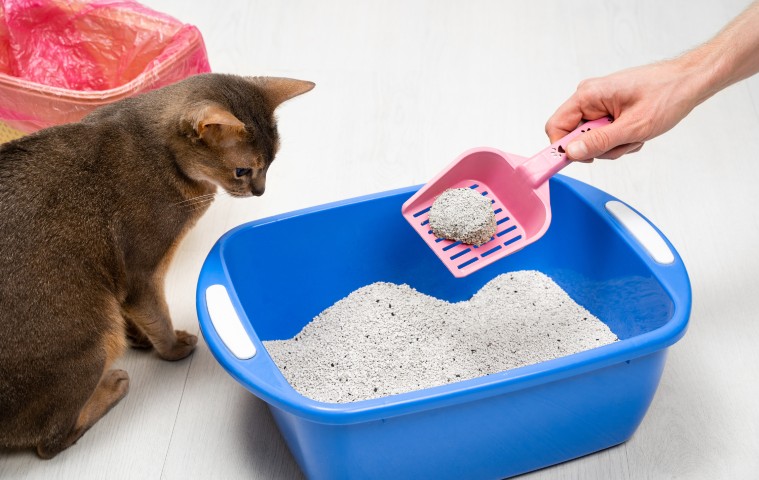
Even the best training can fail if the litter box isn’t maintained properly. Cleanliness and consistency are key.
Scoop Daily (Yes, Every Day)
Removing solid waste and clumps daily keeps the box fresh, prevents odor buildup, and reduces the risk of your cat avoiding it. It also helps you monitor their health—changes in output or behavior can be early signs of illness.
Wash Monthly
Once a month (or more often if needed), empty the entire box and wash it with warm water and mild, unscented soap. Avoid harsh cleaners like bleach or ammonia—these can irritate your cat’s nose and discourage use.
Manage Odors Naturally
A clean litter box shouldn’t smell overwhelming. But for added freshness, try a baking soda-based deodorizer or an odor-neutralizing air freshener placed nearby (not inside the box). Just avoid overpowering scents, which can turn your cat off from using the box entirely.
Having trouble keeping up with cleaning the litter box?
If you’re struggling to keep up with the hassle of daily scooping, you’re not alone. Staying on top of litter box maintenance can be tough when you’ve got a full plate (Trust me, I know firsthand being a mom with a baby, pets, businesses, etc).
If you’re considering easier ways to manage it, I recommend you look into an automatic, self-cleaning litter box. Having one of these will literally change your life.
Checkout this brief discussion on some pros and cons of owning one of these devices. Click the button below to learn more!
4. Addressing Litter Box Problems
Even with the best setup and the cleanest box, accidents can happen. When they do, your response matters.
Never Punish Accidents
Scolding, spraying, or punishing your cat for going outside the box only adds fear and confusion. Cats don’t respond to discipline the way dogs do. Instead of correcting behavior, punishment can make them anxious—and less likely to use the box in the future.
Look for Clues
If your cat starts eliminating outside the box, ask yourself:
- Is the box clean?
- Has the location changed?
- Did you switch litter brands?
- Are there changes in your home that could be stressing your cat (new pet, baby, loud noises)?
Cats often “speak” through behavior. Accidents can be their way of saying something isn’t right.
Rule Out Medical Issues
Frequent accidents, straining, or urinating in unusual places could indicate a urinary tract infection (UTI) or other health issue. If your cat is avoiding the litter box with no clear reason, a vet visit should be your next step.
5. Training in Multi-Cat Homes
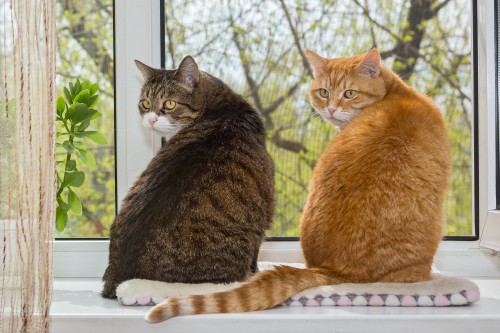
Multiple cats mean more paws using litter boxes—and more potential for territorial drama.
Follow the 1+1 Rule
The Humane Society recommends having one litter box per cat, plus one extra. So, if you have two cats, aim for three litter boxes. This helps prevent conflict and gives each cat a private space.
Use Separate Locations
Don’t place all the boxes in the same area. Spread them out in different rooms to avoid territorial battles and to ensure each cat has easy access.
Monitor Who’s Using What
Some cats will share without issue, while others will not. Watch for signs of avoidance, guarding behavior, or one cat blocking another’s access. Adjust box placement as needed.
When you’ve got more than one cat, it’s easy for things to pile up—literally. If you’re feeling behind on keeping all the boxes clean, it might be time to explore options that can ease the workload.
You can learn more here, by clicking the button below or explore the rest of Kitty Konnect to see what’s possible with modern litter care.
6. Transitioning Outdoor Cats or Rescues
Training a cat who’s never used a litter box before takes a little extra patience—but it’s totally doable.
Use Soil or Outdoor Material
For outdoor cats, start by filling the box with soil or outdoor material they’re used to. Gradually mix in litter over several days until you’ve fully transitioned to your preferred type.
Contain the Environment
Keep them in a smaller space with their litter box until they’ve used it regularly. Then you can gradually expand their space and access to other areas of the home.
7. What If Your Cat Still Won’t Use the Box?
If you’ve tried everything and your cat still refuses to use the box regularly, don’t give up. Start back at the basics:
- Confine your cat to one room with a litter box, food, water, and bedding.
- Watch their behavior closely.
- Reintroduce the box with patience and praise.
- Try different litter types, box styles, or locations.
Sometimes cats need a full reset—especially after a bad experience or change in routine.
And remember: Always rule out health issues first. Behavioral changes are often linked to physical discomfort.
8. Choose the Right Box Type for Your Cat’s Preferences
Not all litter boxes are created equal—just like not all cats are fans of the same setup. Some cats prefer open boxes so they can see their surroundings and don’t feel trapped. Others appreciate the privacy of a covered box. Some senior cats may struggle with high sides, while large breeds like Maine Coons might feel cramped in smaller boxes.
Tip: Observe how your cat reacts to the box you’ve chosen. If they hesitate, avoid it, or only perch halfway in, it may be time to try a different style.
9. Avoid Drastic Changes Too Quickly
Cats are creatures of habit. Sudden changes to the litter type, box location, or box style can cause confusion or lead to avoidance. If you need to make a change, do it gradually. Mix old litter with new, or place the new box beside the old one until your cat transitions comfortably.
Tip: Give your cat a few days to adjust to any new element of their litter routine. Rushing can create resistance.
10. Use Enzymatic Cleaners for Accidents
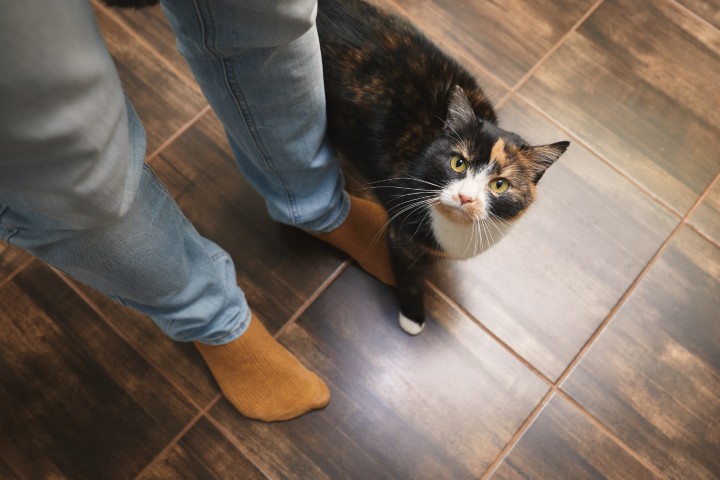
When accidents do happen, how you clean them up matters. Standard household cleaners may remove the stain or odor to you, but cats have far more sensitive noses. They’ll still smell traces of urine or feces—and may return to that spot.
Tip: Always use an enzymatic cleaner to break down the organic materials in cat waste. It eliminates the scent at a molecular level, discouraging repeat accidents.
Final Thoughts: Patience and Routine Are Everything
Litter box training isn’t about luck—it’s about creating a setup that works for your cat and sticking to it. Choose the right box, the right litter, and the right location. Keep things clean, be consistent, and always approach accidents with understanding, not frustration.
Whether you’re training a kitten, working with a rescue, or helping a senior cat adjust to new routines, these tips can set you up for long-term success—and a much cleaner, happier home.
Because let’s be real: a well-used litter box is a beautiful thing.
Tired of Scooping or Still Struggling With Litter Box Issues?
If you’re looking for a cleaner, easier way to manage your cat’s bathroom habits, it might be time to Explore Self-Cleaning Litter Boxes. They’re especially helpful for busy households, sensitive cats, and anyone who wants a more hands-free, hygienic option.
Table of Contents
Toggle

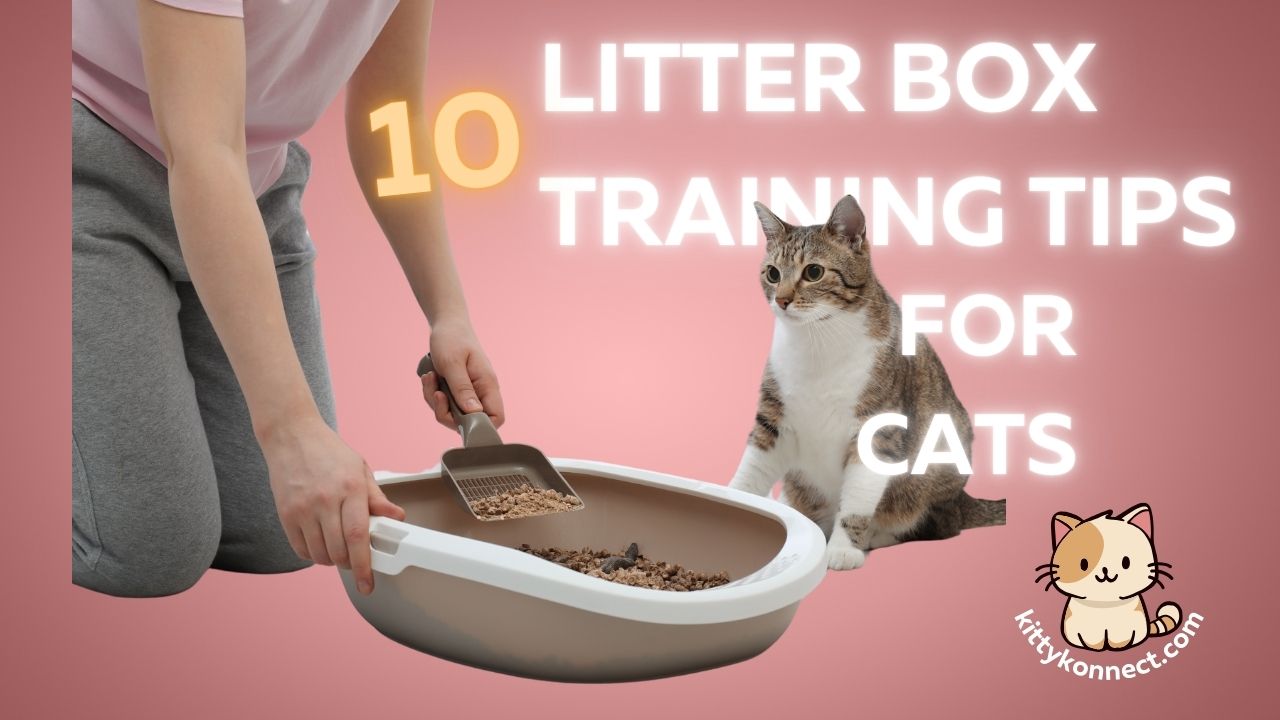
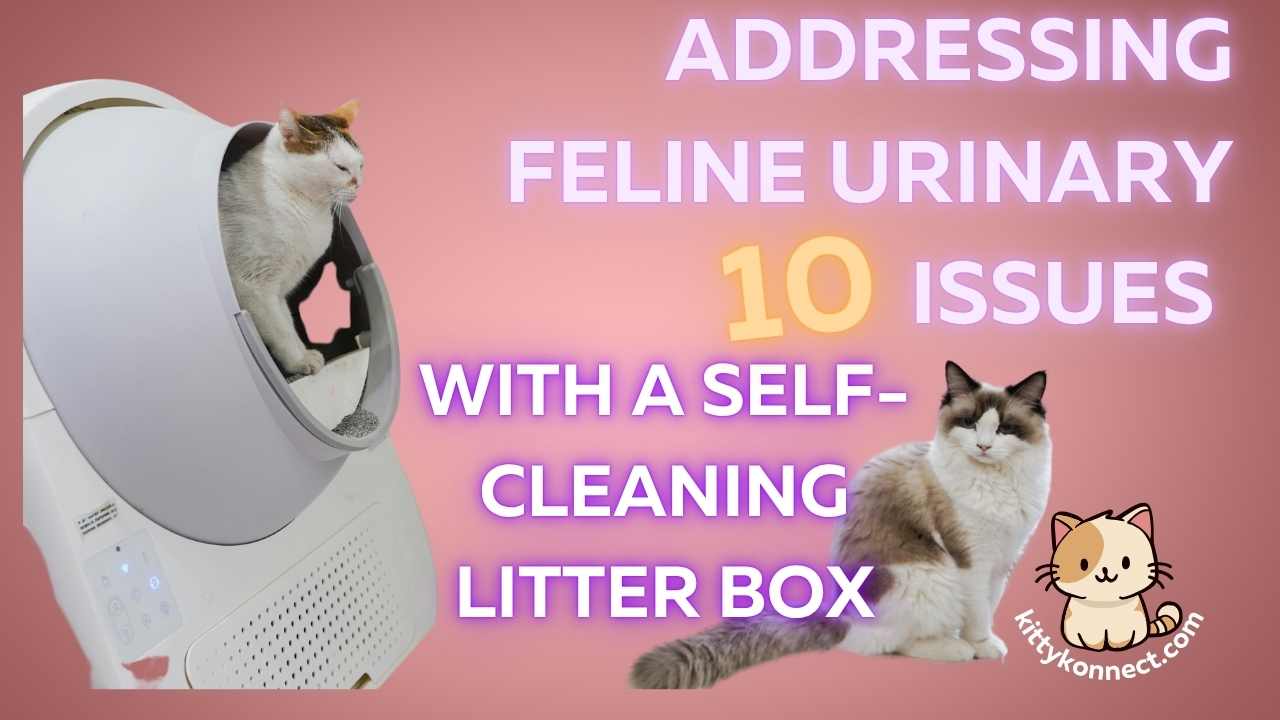
A really interesting article on training your cat to use the litter box. Luckily when we got our kitten, she automatically just used the litter box, and we had the clumping litter, so it was really easy to clean. However, once she grew older we started letting her go outside, and from that moment on she never used her litter box again.
Thank you so much for sharing your experience! It’s always such a relief when kittens take to the litter box right away—it sounds like yours was a natural from the start. ???? And clumping litter definitely makes cleanup a breeze during those early stages.
Letting her outside was clearly a turning point, and that’s actually quite common—once cats have the option to go outdoors, many prefer doing their business there. It’s more instinctual and gives them privacy on their own terms (and saves you from scooping, so win-win in a way!).
That said, it’s always smart to keep a litter box indoors just in case the weather turns or your cat decides she wants an indoor option again. Thank you again for reading and for being part of the conversation—sounds like your kitty has a great setup!
Absolutely loved this guide—it’s incredibly detailed and practical! The emphasis on creating a stress-free, clean environment really shows how much thought went into making this a helpful resource for both new and seasoned cat owners. I especially appreciated the tips for multi-cat households and transitioning outdoor rescues—those scenarios are often overlooked but so important. Your suggestion to use enzymatic cleaners is a game-changer for preventing repeat accidents too. One thing I’m curious about: with so many self-cleaning litter boxes on the market, is there one you’ve personally tested and found to be the most reliable and cat-friendly?
Thank you so much for your thoughtful and encouraging feedback! I’m really glad the guide hit the mark for you—especially with the sections on multi-cat homes and outdoor rescues. Those situations come with their own set of challenges, and I always try to include the real-life stuff that often gets overlooked.
My Go-To Self-Cleaning Litter Box?
The one I’ve personally tested and found to be the most reliable and cat-friendly is the Litter-Robot 4. It checks all the boxes:
Super quiet, which is a big win for sensitive cats
Excellent odor control
Spacious enough for bigger cats or multiple-cat homes
Easy-to-use app and drawer system
And most importantly—the cats actually use it!
That said, I know the Litter-Robot 4 is an investment, so for budget-conscious options, I’ve also kept an eye on models like:
PetSafe ScoopFree Crystal Smart – great for odor control, very low maintenance
Sousia Self-Cleaning Litter Box – works with clumping litter, decent performance for the price
I’m working on a full side-by-side comparison article soon to help folks choose the best one for their needs—so stay tuned! And again, thank you for your kind words. They truly mean a lot.
— Marlinda
I have had cats occasionally in the past, and have also taken care of neighbors’ cats while the neighbors have been away. I definitely agree about the importance or cleaning the litter box regularly. The whole point of a litter box is to provide the cat(s) with a designated, comfortable, safe place to get rid of what they need to get rid of. And they typically do their best to cover it up. But the problem is that they can’t “flush the toilet.” That’s where our help comes in. We flush their toilets for them. Be thankful you don’t have to do it after every single time they use the litter box. Once a day should be sufficient. But if we didn’t do it, it would be like making them go in an outhouse or a porta-potty all the time. Who would want to do that?
I personally am not a “pet mom” kind of person. I’m a mom to my kids, but I think of animals as animals. But still, just being a nice human means being nice to animals. And keeping a litter box clean is one of the least things we can do for cats. Besides, a clean litter box smells a lot better for the humans, too.
Thank you so much for this thoughtful and honest perspective! You’re absolutely right—at the heart of it, cleaning the litter box isn’t about being a “pet parent,” it’s about being a responsible, respectful human to the animals in our care.
I love the way you put it: cats can’t flush their own toilet, and it’s our job to make sure their space stays clean and safe. The comparison to a porta-potty really hits home—no one would want to use one that never gets cleaned, and our feline friends deserve better too!
Even if someone doesn’t identify as a “pet mom” or “cat dad,” your point stands strong: kindness is in the small, consistent things we do, and a clean litter box is a simple act that makes a huge difference in a cat’s comfort and health (and the overall smell of the home!).
Thanks again for sharing your experience and your practical wisdom—it adds so much to the conversation.
I stumbled across your website and immediately fell in love with it. I am now in my 60’s but grew up in a household with 7 magnificent moggies, of whom I can still recall their names. Lucky, Ponsonby..ahh I won’t go on, sorry.
Anyway I have always loved cats as they have a wonderful soothing nature. Your advice on multi cat homes is spot on. Cats tend to be like humans in some ways, and want their own space. and as long as the litter box is regularly cleaned there is no smell.
We even had a few cats we save from being abandoned and they wouldn’t come inside, so we set up a protective enclosure for them with shelter and amenities. And I have a few like this now and wonder which do you think is the best litter box and materials for outside use?
Thanks
Steve
Hi Steve,
Thank you so much for your beautiful message—it absolutely warmed my heart! I love that you still remember the names of your childhood moggies (Ponsonby is a gem of a name!). Growing up with seven cats must’ve been such a special, lively experience—and it sounds like your love for them never faded.
You’re so right about cats having a soothing nature, and I couldn’t agree more—they really do crave their own space, especially in multi-cat homes. And bless you for giving outdoor and abandoned cats a safe place to land. The world needs more cat lovers like you.
For Outdoor Use: Best Litter Box & Materials
When it comes to outdoor or semi-sheltered enclosures, here’s what I recommend:
Litter Box Type:
Covered or High-Sided Boxes – Keeps out wind, rain, and curious wildlife.
Example: Petmate’s Hooded Litter Box or a top-entry box for more privacy and protection.
Weatherproof Storage Tubs (DIY-Style) – Some folks use rubber totes with a cutout for a low-cost, durable solution that’s easy to clean.
Best Litter Materials:
Pine Pellet Litter – Naturally absorbent, breaks down into sawdust when wet, and controls odor well without getting mushy in damp weather. Also biodegradable!
Crystal Litter (Silica) – Great for drier climates, low dust, and long-lasting, but might need extra shelter from moisture.
Clumping Clay – Only if fully protected from moisture; otherwise it can turn into heavy sludge.
Additional Tips:
Place the box under a covered or insulated area inside the enclosure. A small cat house or plastic storage shed works great.
Consider using pee pads or plastic liners underneath in case of spills or excess moisture.
Elevate the box slightly off the ground (on bricks or a crate) to avoid pooling rain or condensation underneath.
If you’re caring for multiple outdoor cats like you are, that’s already such a gift to them. Keeping their space dry and clean just makes it even better. Thank you again for all you do—and for taking the time to write such a heartfelt message.
Wishing you and your current feline crew the very best!
— Marlinda